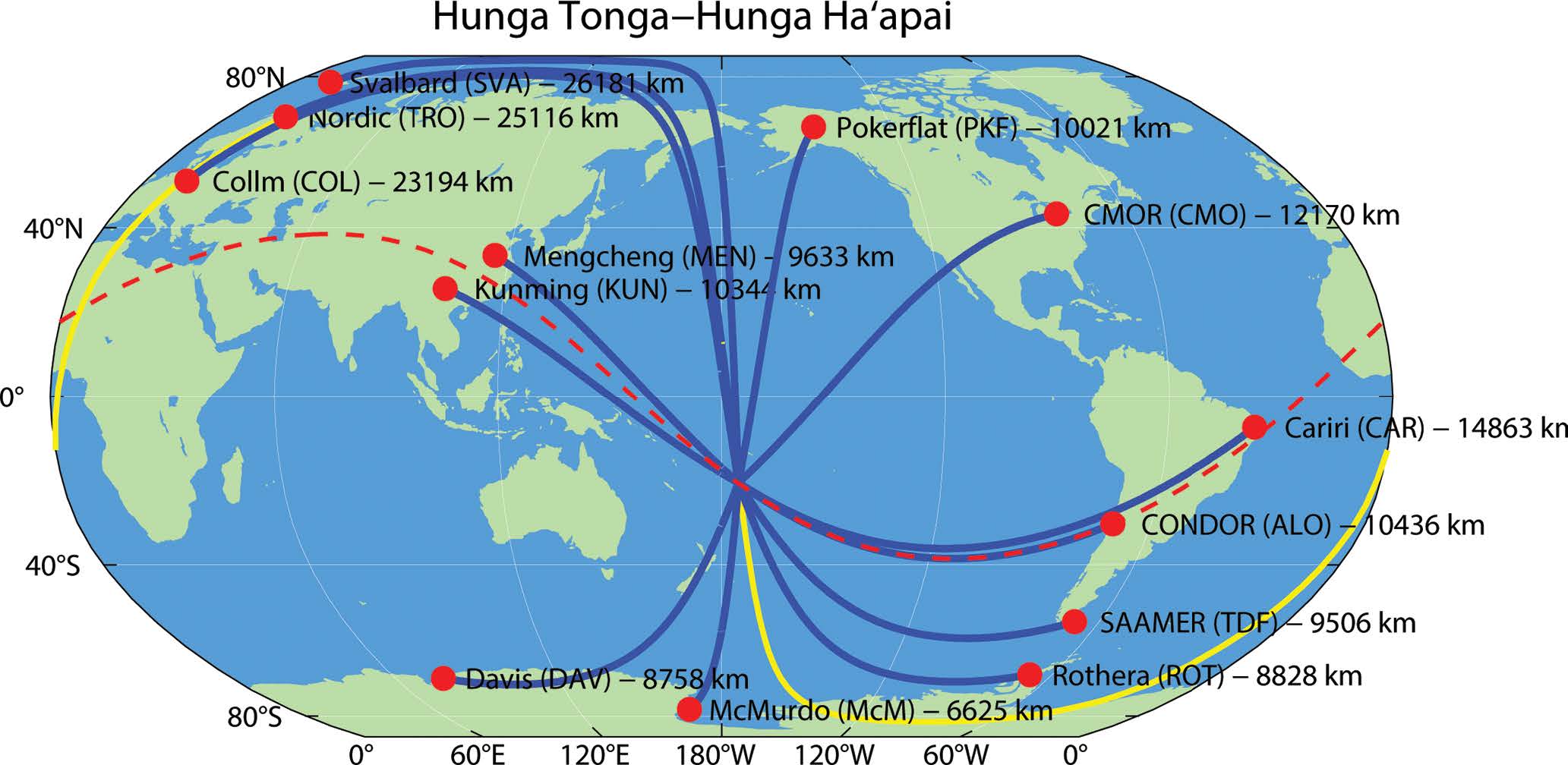
Gravity waves generated by the Hunga Tonga–Hunga Ha'apai volcanic eruption and their global propagation in the mesosphere/lower thermosphere observed by meteor radars and modeled with the High-Altitude general Mechanistic Circulation Model
The Hunga Tonga–Hunga Ha'apai volcano erupted on 15 January 2022, launching Lamb waves and gravity waves into the atmosphere. In this study, we present results using 13 globally distributed meteor radars and identify the volcanogenic gravity waves in the mesospheric/lower thermospheric winds. Leveraging the High-Altitude Mechanistic general Circulation Model (HIAMCM), we compare the global propagation of these gravity waves. We observed an eastward-propagating gravity wave packet with an observed phase speed of 240�5.7ms1 and a westward-propagating gravity wave with an observed phase speed of 166.5�6.4ms1. We identified these waves in HIAMCM and obtained very good agreement of the observed phase speeds of
239.5�4.3 and 162.2�6.1ms1 for the eastward the westward waves, respectively. Considering that HIAMCM perturbations in the mesosphere/lower thermosphere were the result of the secondary waves generated by the dissipation of the primary gravity waves from the volcanic eruption, this affirms the importance of higherorder wave generation. Furthermore, based on meteor radar observations of the gravity wave propagation around the globe, we estimate the eruption time to be within 6 min of the nominal value of 15 January 2022 04:15 UTC, and we localized the volcanic eruption to be within 78 km relative to the World Geodetic System 84 coordinates of the volcano, confirming our estimates to be realistic.